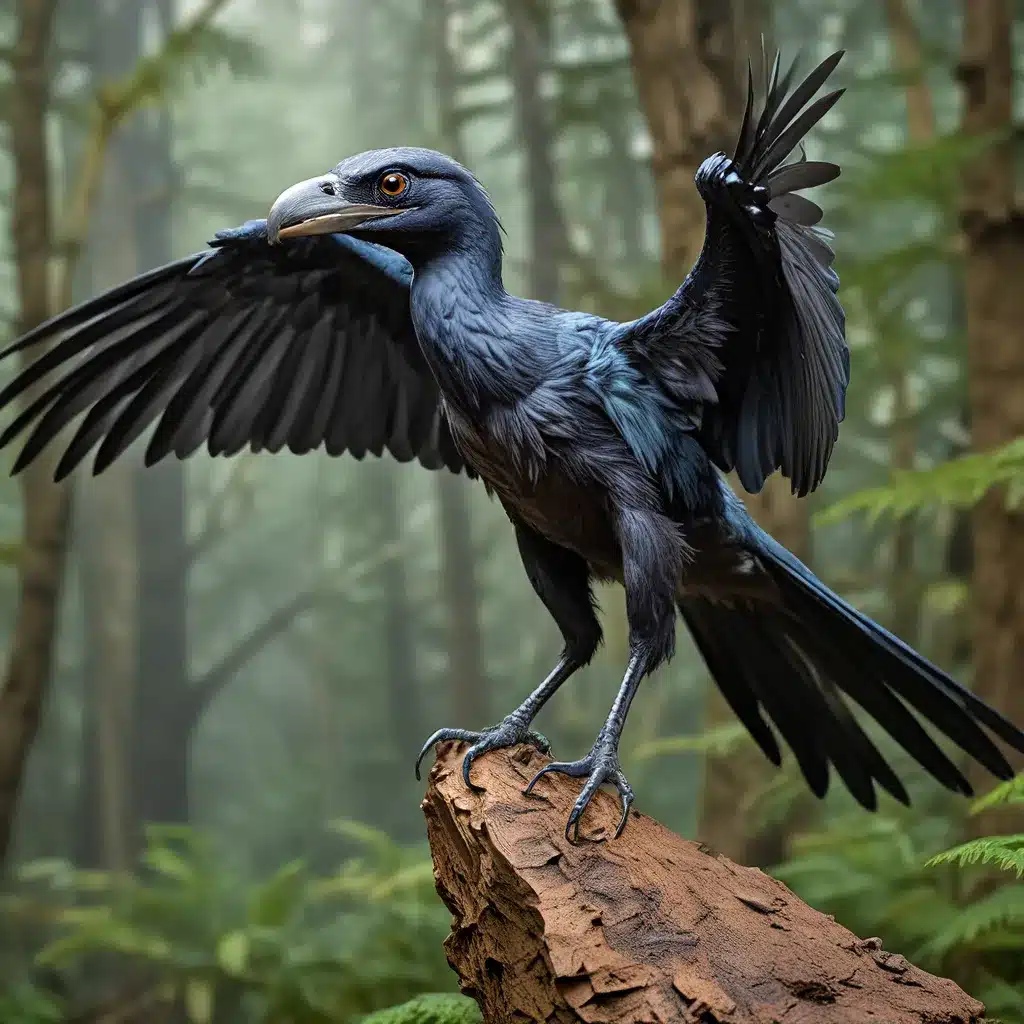
Uncovering the Secrets of a Feathered Dinosaur
The discovery of the Microraptor has captivated the minds of paleontologists and dinosaur enthusiasts alike. This enigmatic creature, a small feathered dinosaur that roamed the earth millions of years ago, has long been a source of fascination and mystery. With its unique anatomical features and the ongoing debate surrounding its evolutionary relationship to modern birds, the Microraptor continues to be a subject of intense scientific scrutiny.
The Microraptor’s Distinctive Traits
The Microraptor was a relatively small dinosaur, measuring only about three feet long from head to tail. What truly set it apart, however, was its remarkable feathered appearance. Fossilized specimens have revealed that this dinosaur was covered in a dense layer of feathers, including long, symmetrical feathers on its arms and legs, giving it the appearance of a four-winged creature.
Artistic depictions of the Microraptor suggest that it may have had the ability to glide or even fly, though the extent of its aerial capabilities is still a subject of ongoing debate. Its sharp teeth and curved claws indicate that it was likely a skilled predator, capable of hunting small prey.
The Evolutionary Enigma
The Microraptor’s place in the evolutionary tree has been a topic of intense discussion among paleontologists. Some researchers have proposed that the Microraptor may have been an early ancestor of modern birds, sharing a common ancestor with the iconic Archaeopteryx, a species often considered the earliest known bird. This hypothesis is based on the Microraptor’s feathered appearance and wing-like limbs, which suggest a possible evolutionary transition from dinosaurs to birds.
However, other scientists have challenged this idea, arguing that the Microraptor may have been a distinct evolutionary branch that diverged from the lineage leading to modern birds. Studies have shown that the preservation of melanosomes (structures that determine feather color) in Microraptor fossils may not provide a complete picture of the dinosaur’s original coloration, further complicating the understanding of its relationship to birds.
Unraveling the Mysteries of Microraptor’s Lifestyle
In addition to the ongoing debates surrounding its evolutionary position, the lifestyle and behavior of the Microraptor have also been the subject of intense scrutiny. Paleontologists have utilized a variety of techniques, including computer modeling and biomechanical analysis, to gain a better understanding of how this enigmatic creature lived and interacted with its environment.
One of the key areas of focus has been the Microraptor’s potential for flight or gliding. Researchers have simulated the fossilization process to better understand how the shape and size of the Microraptor’s melanosomes may have changed over time, potentially affecting our understanding of its original coloration and implications for its aerial capabilities.
Exploring Recent Discoveries and Theories
As the scientific community continues to delve deeper into the mysteries of the Microraptor, new discoveries and theories have emerged that shed light on this intriguing dinosaur. For example, recent findings have suggested that the Microraptor may have been omnivorous, supplementing its diet with both small prey and plant matter.
Furthermore, some researchers have proposed that the Microraptor’s unique anatomy and feathered appearance may have played a role in social and mating behaviors, potentially serving as a means of communication or display among members of its species.
Unlocking the Past: The Significance of Microraptor
The Microraptor’s significance extends beyond its intrinsic fascination as a mysterious and captivating creature. Its study has broader implications for our understanding of the evolution of flight and the transition from dinosaurs to birds. As researchers continue to unravel the complexities of feather color and structural integrity, the insights gained from the Microraptor could shed light on the evolutionary adaptations that paved the way for the development of modern avian species.
Moreover, the Microraptor’s existence serves as a testament to the rich and diverse ecosystem that thrived during the Mesozoic era, a time of remarkable biodiversity and evolutionary innovation. By studying this elusive dinosaur, paleontologists can gain a deeper understanding of the complex web of life that once dominated our planet, ultimately enhancing our appreciation for the incredible story of life on Earth.
As the scientific community continues to explore the Microraptor and its place in the natural world, the mysteries surrounding this enigmatic creature are sure to captivate and inspire generations of researchers, unlocking the secrets of our ancient past and shaping our vision of the future.


